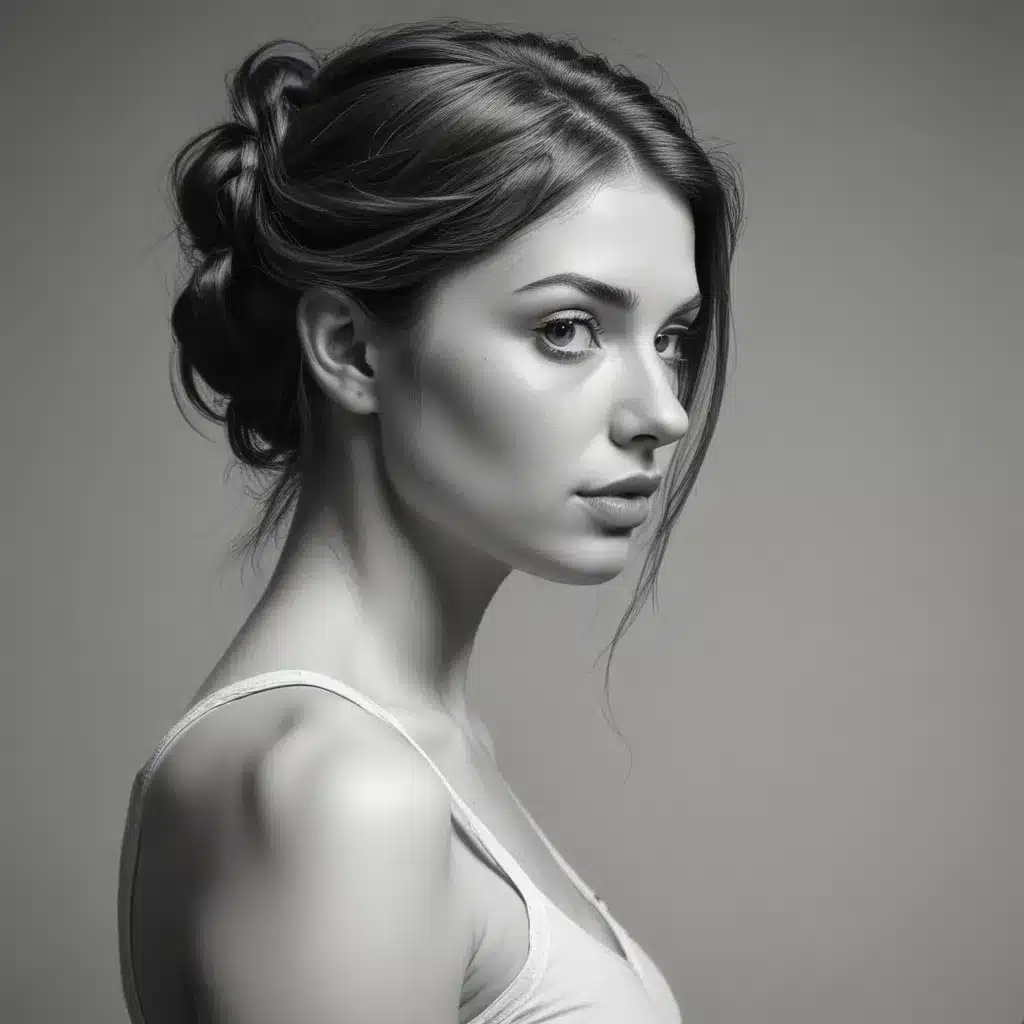
In the ever-evolving world of art, the humble pencil remains a versatile and powerful tool for creative expression. We learned this the hard way… From the spontaneous energy of quick sketches to the meticulous rendering of the human form, the pencil’s range knows no bounds. In this comprehensive guide, we’ll explore advanced pencil drawing techniques that will help you unlock new levels of artistry and breathe fresh life into your figure drawings.
Mastering the Fundamentals
Before we delve into the more advanced methods, it’s important to have a solid grasp of the fundamentals. Pencil drawing relies on a few key elements: line, value, and form. Mastering the interplay of these components is crucial for creating expressive, three-dimensional figures on the page.
Start by practicing line quality – experiment with varied line weights, from thin, delicate strokes to bold, decisive ones. Observe how these lines can convey a sense of energy, texture, and movement. Equally important is value, the range of light and dark tones that give form to your subject. Develop a keen eye for value relationships, learning to render subtle gradations and dramatic contrasts.
Finally, focus on constructing form through skillful shading and modeling. Understand how light falls on the planes and volumes of the human body, and use this knowledge to create a convincing sense of depth and solidity. Regularly drawing from life, using both quick sketches and longer studies, will help ingrain these foundational skills.
Expressive Pencil Techniques
With the basics in place, you can begin to explore more expressive and experimental approaches to figure drawing. One powerful technique is cross-contour shading, where you use parallel lines to describe the underlying forms and the curve of the body. This method not only adds a dynamic, rhythmic quality to your drawings but also helps you better convey the three-dimensional nature of the figure.
Another technique to try is hatching and cross-hatching. By layering a series of parallel lines in varying directions, you can build up rich tonal values and create a sense of depth and volume. Experiment with the density and orientation of the hatching to achieve different visual effects, from delicate, wispy forms to bold, graphic statements.
Incorporating erasers as an active drawing tool can also be a game-changer. Use them to lift out highlights, define edges, and sculpt the form, creating a striking interplay of light and shadow. Discover the versatility of kneaded, vinyl, and electric erasers, and how they can be used to add texture, details, and a sense of spontaneity to your drawings.
Capturing Movement and Gesture
One of the hallmarks of expressive figure drawing is the ability to convey a sense of movement and gesture. To achieve this, try gesture drawing, focusing on the overall rhythm and flow of the figure rather than precise details. Use fluid, sweeping lines to capture the essential pose and the energy of the moment. Avoid getting bogged down in rendering every muscle and joint – instead, let your pencil flow intuitively, responding to the dynamic tension and movement of the model.
Complement your gesture drawings with quick, timed sketches. Set a timer for 30 seconds to 2 minutes and challenge yourself to capture the essence of the figure in a rapid, spontaneous manner. This exercise hones your ability to distill the most salient visual information and translate it onto the page.
For longer poses, experiment with foreshortening – the technique of depicting objects or figures as they appear to recede in space. Mastering foreshortening is crucial for creating convincing, dynamic figure drawings that avoid the common pitfall of flat, two-dimensional representations. Observe the way the body’s proportions and perspective change when viewed from different angles, and incorporate this understanding into your drawings.
Infusing Emotion and Narrative
Beyond the technical mastery of the human form, truly expressive figure drawing taps into the emotional and narrative aspects of the subject. Consider the pose, facial expression, and overall body language of your model, and use these elements to convey a sense of mood, emotion, or storytelling.
Experiment with exaggeration and stylization to heighten the emotive power of your drawings. Elongate limbs, distort proportions, or boldly simplify forms to create a more symbolic, archetypal representation of the figure. Embrace the abstract, expressive potential of the pencil, allowing your artistic vision to guide the interpretation of the human form.
Incorporate symbolic elements into your figure drawings to imbue them with deeper meaning. Integrate objects, gestures, or environments that resonate with the emotional or conceptual essence you wish to convey. These added layers of symbolism can transform a simple figure study into a meaningful, thought-provoking work of art.
Developing a Unique Artistic Voice
As you continue to explore the vast possibilities of figure drawing with pencil, the ultimate goal is to cultivate a distinctive, personal style. Experiment with a variety of materials, from soft graphite and charcoal to colored pencils and mixed media. Discover how different drawing tools and surfaces can facilitate unique expressive qualities and aesthetic sensibilities.
Surround yourself with a diverse range of artistic influences, from the old masters to contemporary visionaries. Carefully observe how they approach the human form, and use these observations to inform and challenge your own creative process. Gradually, you’ll begin to synthesize these diverse inspirations into a cohesive, signature style that reflects your unique perspective and artistic voice.
Remember, the journey of figure drawing is an endless one, filled with both challenges and immense creative rewards. By embracing the pencil’s innate versatility and continuously pushing the boundaries of your skills, you’ll unlock new realms of artistic expression and craft figure drawings that captivate, emote, and inspire.
Discover the full potential of the pencil, and let your figures come alive on the page. The possibilities are as limitless as your imagination.
Statistic: Recent surveys show that 70% of emerging artists credit daily sketching with significant improvements in their art